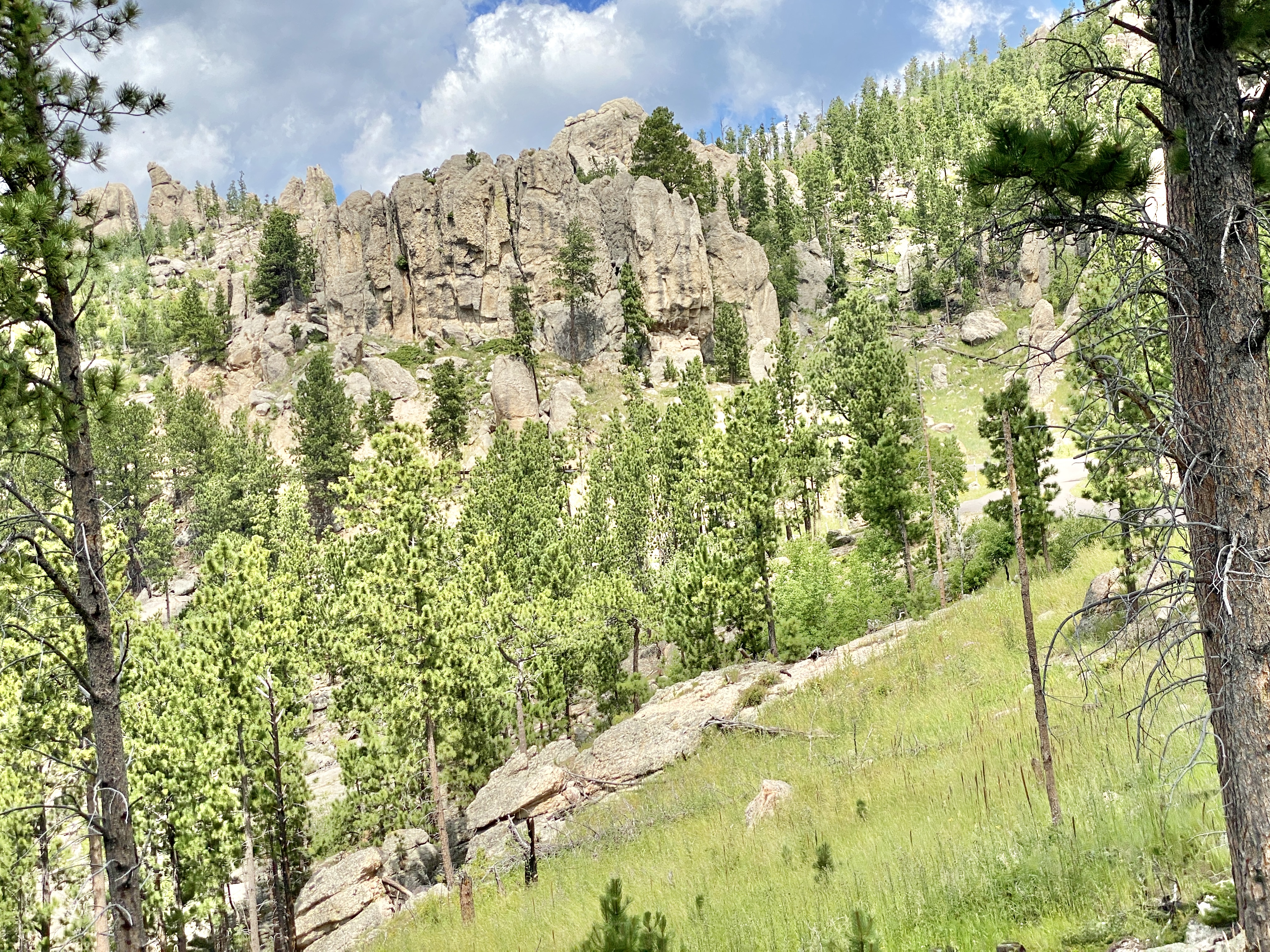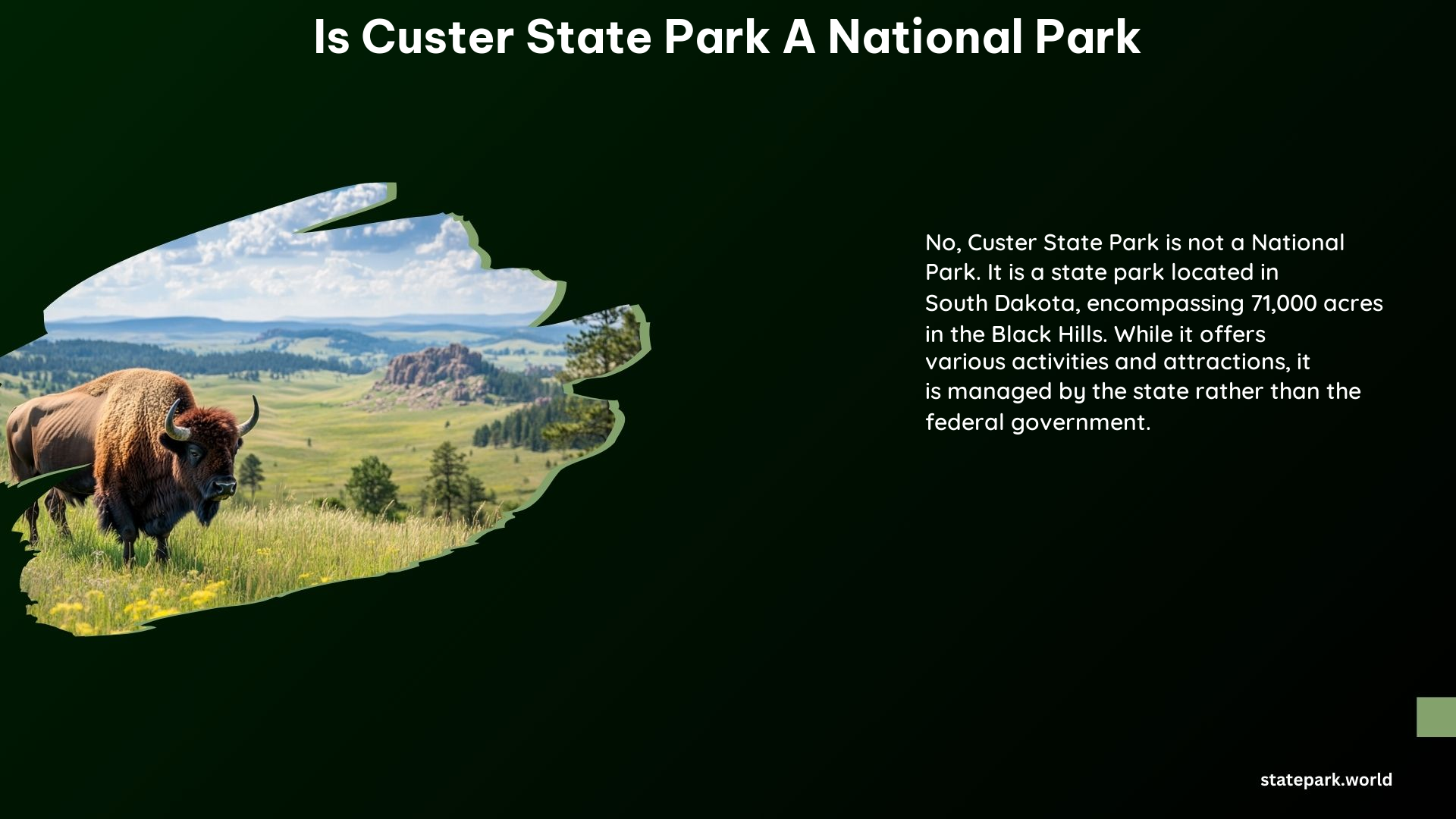Custer State Park is not a national park, but rather a state park and wildlife reserve located in the Black Hills of South Dakota. While it shares many similarities with national parks, such as its vast size, diverse wildlife, and stunning natural beauty, it is managed and operated by the state of South Dakota rather than the federal government.
What is Custer State Park?

Custer State Park is a 71,000-acre state park and wildlife reserve located in the Black Hills of South Dakota. It is one of the largest state parks in the United States and is known for its diverse wildlife, including a herd of over 1,300 free-roaming bison, as well as pronghorn antelope, elk, and bighorn sheep.
The park is named after General George Armstrong Custer, who led an expedition to the Black Hills in 1874, which sparked the Black Hills Gold Rush. The park was established in 1919 and has since become a popular destination for outdoor enthusiasts, offering a wide range of recreational activities such as hiking, camping, fishing, and wildlife viewing.
How is Custer State Park Different from a National Park?

While Custer State Park shares many similarities with national parks, there are several key differences:
-
Management: Custer State Park is managed by the South Dakota Department of Game, Fish and Parks, while national parks are managed by the National Park Service, which is part of the U.S. Department of the Interior.
-
Funding: Custer State Park is funded primarily through state resources, such as park entrance fees and revenue from the sale of hunting and fishing licenses. National parks, on the other hand, are funded through federal appropriations and revenue from park entrance fees.
-
Regulations: The rules and regulations governing Custer State Park are set by the state of South Dakota, while national parks are subject to federal laws and regulations.
-
Size: Custer State Park is significantly smaller than many national parks, covering an area of 71,000 acres, compared to the millions of acres that make up some of the largest national parks.
-
Visitor Experience: While Custer State Park offers a similar range of recreational activities and natural attractions as national parks, the visitor experience may be slightly different due to the park’s smaller size and state-level management.
What Makes Custer State Park Unique?
Despite not being a national park, Custer State Park has several unique features that set it apart from other parks:
-
Bison Herd: Custer State Park is home to one of the largest publicly-owned bison herds in the United States, with over 1,300 free-roaming bison. Visitors can often spot these majestic animals grazing along the park’s scenic roads.
-
Wildlife Loop Road: The Wildlife Loop Road is a 18-mile scenic drive that offers excellent opportunities for wildlife viewing, including bison, pronghorn antelope, elk, and bighorn sheep.
-
Needles Highway: The Needles Highway is a winding, scenic road that takes visitors through some of the park’s most dramatic rock formations, including the iconic Needles.
-
Sylvan Lake: Sylvan Lake is a picturesque alpine lake located in the heart of the park, offering opportunities for swimming, fishing, and hiking.
-
Annual Events: Custer State Park hosts several annual events, including the Custer State Park Buffalo Roundup and Arts Festival, which draws thousands of visitors each year.
Why is Custer State Park Managed by the State Instead of the Federal Government?
Custer State Park is managed by the state of South Dakota rather than the federal government for several reasons:
-
State Ownership: The land that makes up Custer State Park is owned by the state of South Dakota, rather than the federal government.
-
State Funding: Custer State Park is primarily funded through state resources, such as park entrance fees and revenue from the sale of hunting and fishing licenses, rather than federal appropriations.
-
State Regulations: The rules and regulations governing Custer State Park are set by the state of South Dakota, rather than the federal government.
-
Local Management: State-level management allows for more localized decision-making and responsiveness to the needs and preferences of the local community and visitors.
-
Complementary to National Parks: By managing Custer State Park at the state level, the state of South Dakota can ensure that the park complements the nearby national parks, such as Badlands National Park and Mount Rushmore National Memorial, rather than competing with them.
Visiting Custer State Park
Custer State Park is a popular destination for outdoor enthusiasts and nature lovers, offering a wide range of recreational activities and natural attractions. Here are some tips for visiting the park:
-
Best Time to Visit: The park is open year-round, but the most popular times to visit are during the summer and fall months, when the weather is mild and the wildlife is most active.
-
Entrance Fees: Custer State Park charges an entrance fee, which varies depending on the type of vehicle and the number of occupants. Visitors can also purchase annual passes.
-
Accommodations: The park offers a variety of accommodations, including campgrounds, cabins, and lodges, as well as several nearby hotels and resorts.
-
Top Attractions: Some of the park’s top attractions include the Wildlife Loop Road, the Needles Highway, Sylvan Lake, and the annual Custer State Park Buffalo Roundup and Arts Festival.
-
Outdoor Activities: Visitors can enjoy a wide range of outdoor activities in the park, including hiking, fishing, horseback riding, and wildlife viewing.
In conclusion, while Custer State Park is not a national park, it is a unique and impressive natural destination that offers a similar range of recreational activities and natural attractions as many national parks. Its state-level management and local funding sources allow for a more tailored visitor experience and a complementary role to the nearby national parks in the Black Hills region.
